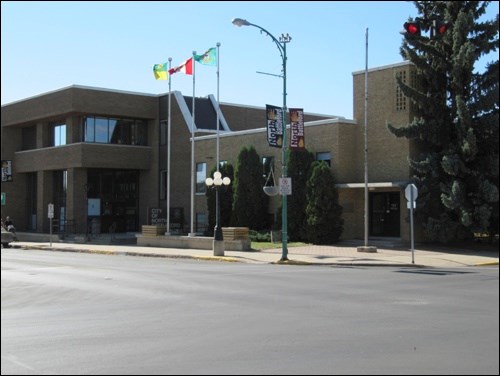A long-talked-about crackdown on vacant commercial buildings in the city was included among the mill rate and taxation bylaws introduced to council Monday night.
Bylaws to establish mill rate factors and to establish minimum and base taxes and to levy the base tax for UPAR made it through two readings at council Monday.
But first reading was also given to a bylaw with provisions that would impose a special increased mill rate on a new subclass, of “vacant commercial buildings” in the “key commercial corridor.”
The idea is to impose the higher tax in 2017 on buildings that have been allowed to sit idle for long periods of time.
Vacant buildings have been an issue in the city for years, specifically in the downtown where there are still empty storefronts throughout the core, despite the demolition of some empty buildings in recent years. It is also a particular issue for properties along 100th Street.
City director of finance David Gillan explained that these idle buildings create “financial loss to the city as far as development, and spinoff and residential development,” but also safety issues.
“We don’t want children in vacant buildings and accidents to happen.”
The idea of the subclass was “to try and get these buildings back into circulation, back developed and active and rotating in a healthy way so that it’s not a detriment to the community.”
The bylaw would target buildings located in what is described as the “key commercial corridor.”
It includes the downtown area but also includes the southeast quadrant as well as all of Railway Avenue and 100th Street.
“If this corridor doesn’t have orderly rotation of commercial properties, it’s hard for new investors to come into the city,” said Gillan.
The bylaw would target what Gillan estimates are 25 buildings identified in 2017 in the city that fall under the proposed definition of this subclass. About half of them are located on 100th Street, Gillan said, with others found on 101st, 102nd Street, Railway Ave. East and elsewhere.
According to Gillan, a vacant commercial building will be defined as any commercial building that, since 2015, does not have a utility account or a business license with the city.
There have been various initiatives and bylaws cracking down on vacant commercial buildings in other cities in the country, but North Battleford officials believe they are the first in Saskatchewan to come up with this sort of tax-based approach to the problem.
As for how much tax these vacant property owners will have to pay, Gillan said the mill rate for this subclass will be set at two times the commercial mill rate.
It is estimated to generate between $70,000-$80,000 from these 25 properties.
As for the revenue from the additional taxes from vacant buildings, Gillan is proposing setting it aside for economic development. Mayor Ryan Bater pointed out the money could help fund the upcoming incentive program.
However, Gillan emphasized that the revenue should diminish over time, as owners seek to get off of this subclass list and get their buildings back in circulation.
“This is not about raising revenue for the city. This is about discouraging this type of behavior for the city.”
City manager Jim Puffalt noted that this initiative is being done in conjunction with a number of issues surrounding downtown revitalization. Also coming soon, he said, will be an incentive program to encourage development in the downtown and that would be presented as early as next week.
But according to Puffalt, enough was enough on the issue of vacant buildings.
“We’re all to the point of frustration to some degree,” said Puffalt, who later added “these properties are not paying their fair share for utilities.”
First reading of the bylaw took place Monday night. The plan now is to consult with the public on the implications of the city’s proposals, specifically with groups such as the Battlefords Chamber of Commerce, the downtown BID, and others.




